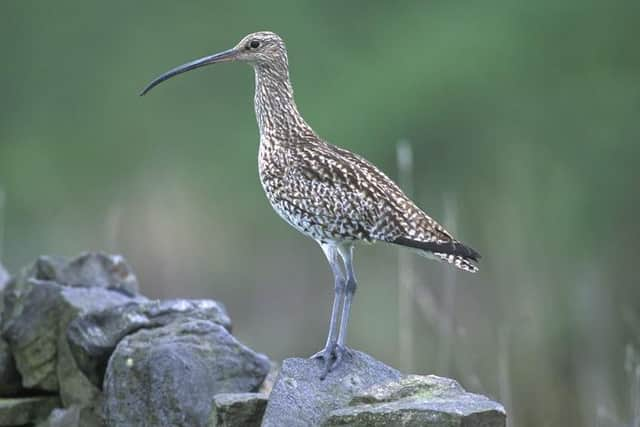Yorkshire Dales National Park identifies 41 native species considered to be a risk
Some of them are species often described as sounds of spring and summer in The Dales.
The curlew and swift are amongst 12 birds on the list. Birds of the moor such as hen harrier and black grouse are also in the twelve.
Advertisement
Hide AdAdvertisement
Hide AdTen mammals, ten plants, eight butterflies and moths and one other animal – the white clawed crayfish – complete the draft list of 41 priority species.


The National Park Authority endorsed the approach being taken to identify priority species when it met to discuss “the nature emergency” earlier this month.
It also agreed to work in partnership with the Yorkshire Dales Biodiversity Forum, and the local farming and woodland forums, to develop a final list for the Yorkshire Dales Nature Recovery Plan, to be published in June 2023.
The document will set out a long term vision for wildlife conservation in the National Park. It will succeed ‘Nature in the Dales’, the Biodiversity Action Plan which covered the period 2010-20.
Advertisement
Hide AdAdvertisement
Hide AdThe draft list of 41 priority species is markedly smaller than the list of 122 priority species in Nature in the Dales.
Senior Wildlife Conservation Officer, Tony Serjeant, told the meeting that only species with nationally significant numbers in the National Park ought to be included as conservation needed to be concentrated on species where a real difference could be made and monitored.
The Member Champion for the Natural Environment, Mark Corner, said: “Owing to the efforts of farmers and moorland managers, some species are doing better in the Yorkshire Dales National Park than in most other areas of the country.
"But we are keenly aware the objective we and our partners set on nature recovery in the Yorkshire Dales National Park Management Plan is not going to be met. We need urgently to address the ‘nature emergency’ and help to reverse the declines in wildlife locally and nationally.”
Advertisement
Hide AdAdvertisement
Hide AdHe added: “The draft list of priority species is not a list of most important or favourite species in the National Park. These are the species we have identified as most in need of additional, bespoke conservation work.
“I’d invite people to look out for the birds, bats and mammals on the list. People don’t have to own or manage large areas of land to improve the prospects for some of these species.
"In some communities residents are installing nest boxes for swifts and encouraging house martins to nest. There is something every person who lives in, works in or visits the Dales can do to prevent these species from disappearing.”
The list features: 12 types of birds – Swift, Hen Harrier, House Martin, Peregrine, Red Kite, Yellow Wagtail, Curlew, House Sparrow, Starling, Black Grouse, Ring Ouzel, Lapwing. Ten mammals – Water Vole, Hazel Dormouse, Brandt’s Bat, Daubenton’s Bat, Whiskered Bat, Natterer’s bat, Common Pipstrelle, Soprano Pipistrelle, Brown Long-eared Bat, Red Squirrel. Eight butterflies and moths – Northern Brown Argus, The Forester, Small Pearl-Bordered Fritillary, Yellow-ringed Carpet, Heath Rivulet, Least minor, Chestnut-coloured Carpet, Barred-tooth Stripe. The White Clawed Crayfish features as well as ten types of plant – Alpine Rock-cress, Hairy Rock-cress, Lady’s Slipper, Mountain Avens, Field Gentian, Common Juniper, Burnt-tip Orchid, Dwarf Milkwort, Creeping Willow, Marsh Saxifrage.
